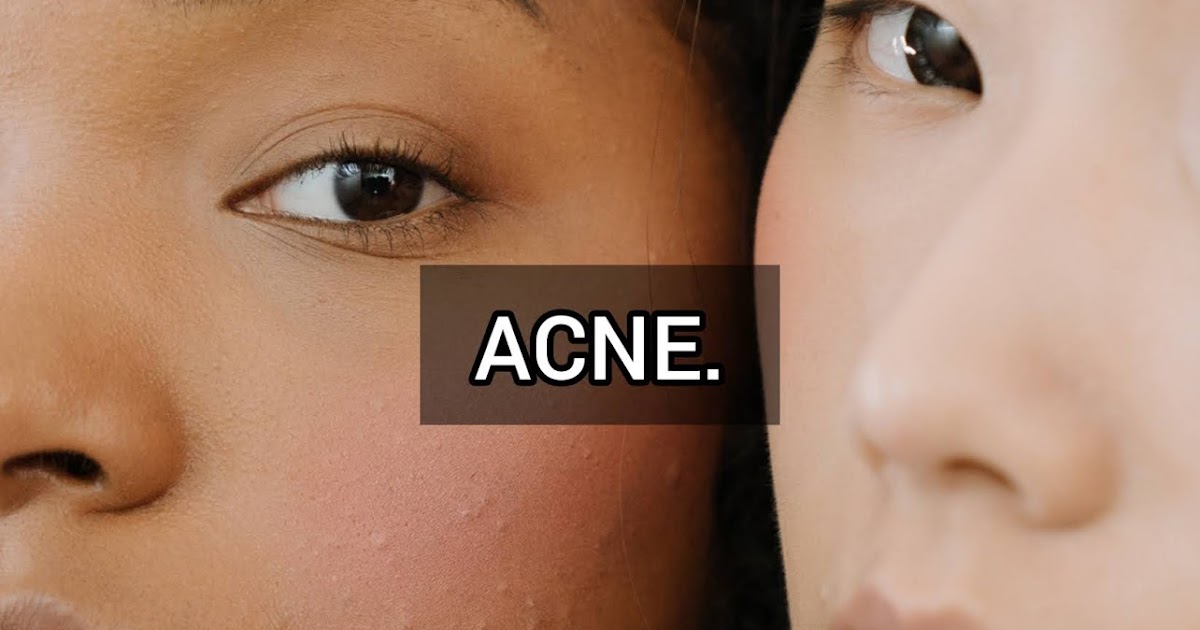
Acne is a very common skin problem. It is caused by inflammation of the skin’s hair follicles and oil-producing (sebaceous) glands.
Hair follicles are the small structures on the scalp that produce hair. Sebum is produced by sebaceous glands that surround hair follicles in acne-prone areas. The “pilosebaceous unit,” which consists of sebaceous glands and hair follicles, is where acne cysts and pimples form. Tallow moisturizes hair and skin. Each hair, along with sebum, rises through the surface of the skin.
Acne frequently appears during puberty.. Acne occurs when the sebaceous glands in the skin are overstimulated to produce sebum. These sticky cells clog the skin’s hair follicles and trap sebum. Bacteria that normally live in hair follicles multiply as a result of the blocked, oil-filled follicle. As a result, inflammation, redness and pimples (pustules) occur. Teen acne breakouts are likely caused by a natural increase in androgen hormones during adolescence. These androgens stimulate the sebaceous glands, causing them to produce excess sebum. Hereditary factors also influence the problem.
The following factors can cause acne:
Oily cosmetics
Humidity
Sweating profusely
Medications such as lithium steroids.
Poor diet or poor hygiene are not causes of acne. Excessive skin washing can aggravate an acne breakout.
Symptoms
Acne can cause:
Whiteheads and blackheads (comedones).
Comedones are enlarged hair follicles that contain sebum. Comedones that have broken through the surface of the skin are what cause blackheads. When exposed to air, sebum turns black. Whiteheads are comedones that have not broken the surface of the skin.
Acne scars (pustules). They are hair follicles that have become inflamed. Bacteria multiply in the follicle and attract infection-fighting cells. These cause irritation and redness by releasing substances. The follicle then ruptures, allowing the contents to leak into the surrounding skin. This aggravates the inflammation.
Cysts and nodules are more serious infections of the hair follicles. They penetrate deeper into the skin, forming deep, firm bumps and swellings. They are caused by an increase in sebum production and bacterial growth, which causes skin irritation and redness.
Acne usually appears during the menstrual cycle in both girls and women.
Diagnosis
A simple physical examination by your doctor is usually enough to diagnose acne. He or she will examine your face, chest, back, upper arms, and shoulders for comedones, pustules, nodules, and acne cysts.
To identify contributing factors, your doctor will ask you questions about your medical history. You will be asked about your:
history of menstruation
Hair growth patterns
Cosmetic products
Facial cleansers
Medicines
Acne breakouts can occur at any age after puberty. They are more common in adolescence.
Acne can never be avoided.
Acne appears in most people. It’s a normal part of growing up.
Acne can be treated with the following medications:
Salicylic acid cleanses. This helps remove sebum from comedones.
Benzoyl peroxide gels. This medicine is applied to the skin in the form of a thin film. They dry and peel the skin. Helps in cleaning clogged hair follicles.
Azelaic acid cream. To start, apply twice a day to clean, dry skin. The frequency can then be reduced to once a day. It usually takes a few weeks for things to improve. It helps in fighting bacteria and can reduce the formation of comedones.
Tretinoin is a type of antibiotic (Retin-A). It is applied to the skin in the form of a cream, gel or liquid. Helps remove clogged skin follicles by increasing skin cell renewal. Tretinoin makes the skin more sensitive to sunlight, so it should be used along with sunscreen.
Antibiotics. Certain antibiotics can be applied directly to the skin to prevent acne-causing bacteria from multiplying. If these topical treatments fail, oral antibiotics are used to treat acne. These medications, however, can have side effects. They are only available with a prescription. Some antibiotics taken by mouth have been linked to birth defects.
In severe cases, oral isotretinoin may be considered. This medication has the potential to be extremely effective, but it can also have serious side effects, including serious birth defects. Strict protocols must be followed.
Forecast
Acne can almost always be treated with medications. However, results may not be visible for several weeks or months. Most topical medications take four to eight weeks to take effect. Tretinoin can produce its best results in three to six months.






Recent Comments